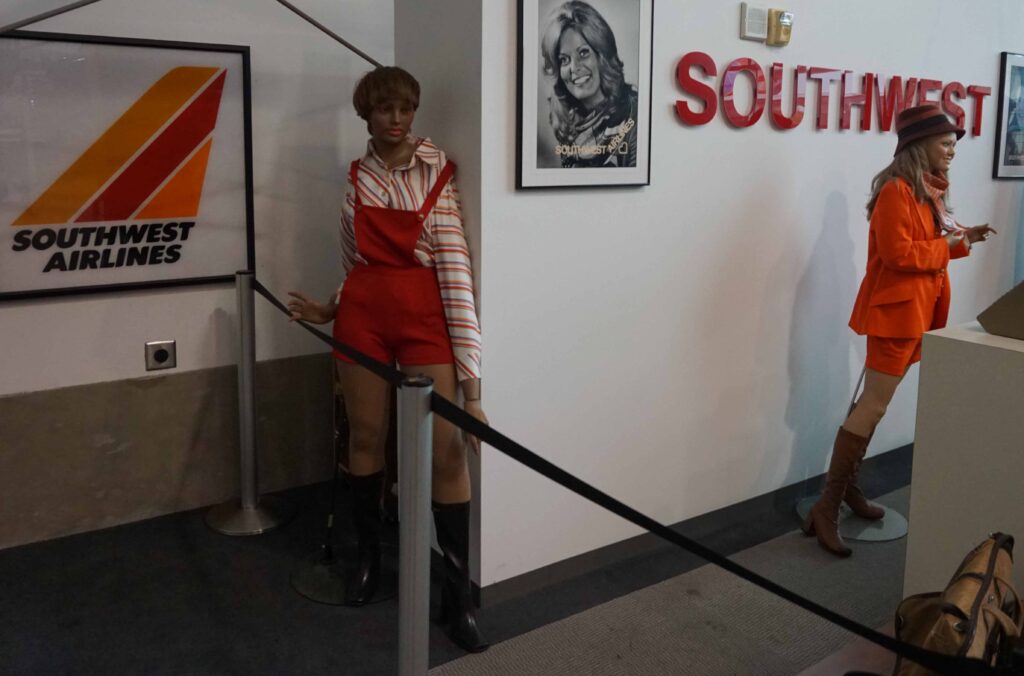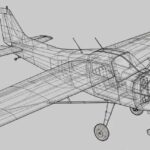While most airlines are struggling to stay afloat, one airline is schooling its competitors on how air travel should be. That airline is Southwest. The Southwest founders challenged every assumption about air travel to come up with new and innovative ways to stand out and be more efficient. In fact, Southwest Airlines is the poster child when it comes to high levels of employee and aircraft productivity.
Southwest started small. In 1967 Herb Kelleher, a lawyer, and Rollin King, a pilot, were in a bar when Herb blurted out, “Let’s start an airline.” He grabbed a napkin and drew a triangle and labeled the corners Dallas, San Antonio and Houston, indicating the cities he planned to serve with direct flights and showed it to Rollin. Rollin responded, “You’re crazy, let’s do it,” and Southwest was born. Southwest has always been focused on efficiency and the customer experience. Not wanting the customer experience to be same as other airlines, Southwest chose not to call their in-flight staff, “flight attendants”, as the rest of the industry did. Instead, Southwest wanted to present a different image and chose to call them “hostesses”. Again, rather than follow the pack when it came to the more conservative dress codes of its in-flight staff in the 60s and 70s, Southwest hostesses wore hot-pants and go-go boots.
While the hot pants and go-go boots are gone, in another effort to improve the customer experience today, Southwest employs colorful boarding announcements to engage passengers. In this age of social media and viral videos, Southwest sets itself apart with this secret weapon that costs them nothing to implement yet pays huge dividends in customer satisfaction Click here for an example of a Southwest boarding announcement that went viral.
In the beginning, when Southwest was still an upstart airline that lacked deep pockets, a rival incumbent airline offered super cheap fares on Southwest’s limited routes. The rival thought the action would bankrupt Southwest as it tried to either price match or lose market share to the rival based on its lower cost. At least that was how the rival airline figured it would go. Rather than take the bait, Southwest chose to change the problem and instead included a free bottle of Chivas Regal or Crown Royal with each ticket rather than price match. This unexpected response caused the rival airline to surrender these routes to Southwest.
To keep costs down, Southwest chooses to use smaller airports when it can to keep gate fees down or to schedule flights at major airports during off-peak hours. When flying to Chicago, rather than fly into or out of O’Hare, it instead flies out of Midway. Rather than fly into or out of Dallas/Fort Worth Southwest flies out of Love Field, and so on. Moreover, most airlines employ a hub-and-spoke system where passengers are often forced to make connections at the airline’s hub before reaching their ultimate destination. Southwest challenged this conventional wisdom and instead chose to employ a non-stop point-to-point system.
With a hub-and-spoke system, luggage transfers between flights slow the loading process forcing planes to sit at airports longer. Southwest realized that to make money, their assets have to be flying and not waiting at the gate for luggage to be transferred from one aircraft to another. The average Southwest aircraft makes more flights per day and spends less time on the ground than its competitors.
Again, challenging the conventional wisdom of assigned seating and boarding the aircraft from the rear of the aircraft to the front, Southwest chose to group passengers based on check-in time and to allow its passengers to choose any available seat once they board. Based on a 2012 study, the unassigned seat method employed by Southwest is the fastest method currently in use for passengers to board a plane. On average, the method used by Southwest is actually 10 minutes (or 40%) faster than the standard method used by most airlines of boarding from the back frontward. Furthermore, implementing a no reserve seating policy ensured that passengers would come earlier and queue up at the gate making the loading process faster.
In another novel approach, rather than have a fleet of different planes, every Southwest plane is a Boeing 737. This lack of aircraft diversity allows any crew to fly any aircraft, reducing training times, and simplifying maintenance and logistics saving Southwest money which it can pass along to the passenger in the form of lower airfares. Additionally, rather than trying to keep planes flying for many years, Southwest upgrades their fleet often as newer planes are more fuel efficient thus saving money. Moreover, when they order 160 planes all of the same types, they can negotiate steep discounts from Boeing on their price.
Southwest has a lot of lessons for the business owners. Focus on the customer experience, challenge conventional wisdom, rethink problems to find alternative solutions, and look for efficiencies in every process you perform.
How can you apply the lessons of Southwest to your business?












